The quest to restore the American elm has been underway for more than half a century. Today, with help from The Nature Conservancy’s Christian Marks, success is closer than ever—which is good news for our floodplain forests, as well as our urban communities.
On a humid day in mid-June, Jessica Colby is hunched over a collection of bright green stems, each one waving a leaf or two, each one a tiny banner of hope. It’s almost noon, and the temperatures in the greenhouses at the University of Massachusetts in Amherst are climbing. Colby pushes her hair off her damp brow and, wielding a small blade, gently scrapes the outer layer from the stem she is holding, before dipping it in rooting powder and adding it to the lineup of cuttings anchored before her in a moistened block of foam. The leafy stems march in straight rows across the table, like a band of miniature soldiers fighting for a cause.
Colby and her fellow interns, Izzy Bazluke and Lisette Stone, are, in fact, the latest recruits in what has been a long battle to bring back one of America’s most iconic trees, Ulmus americana. Their fearless leader, Christian Marks, a floodplain ecologist with The Nature Conservancy’s Connecticut River Program, has spent more than a decade tackling floodplain restoration in the Northeast, with a special focus on the American elm. Along the way, he’s developed an eye for what he calls survivor trees—like the two on Elwell Island in Northampton, Massachusetts, where Colby’s stems were harvested. “It’s sort of an obsession with me now,” he says. “I’m always watching, always looking.” As he drives New England’s winding roads, Marks peers into the forests, past the shadows, looking for the elm’s distinctive vase-shaped form, rising above the canopy. These massive trees—often 100 feet tall and more than 100 years old—stand alone in the forest now, surrounded by smaller dead and dying elms, reminders of another time.
Loss of an Icon

The tragedy that befell one of the country’s most magnificent trees began nearly a century ago. First described in the Netherlands in 1919, the Dutch elm fungus is carried by the European elm bark beetle, which crossed the Atlantic in 1930 in a shipment of logs purchased by an Ohio furniture maker. Before long, Dutch elm disease (Ophiostoma ulmi) was sweeping across much of the eastern United States. One after another, the giant trees were infected—and then swiftly cut down. Their famously arched silhouettes, which once soared in shady cathedrals of intertwining branches along countless community main streets, vanished, leaving behind barren stretches of pavement and neighborhoods stripped of beloved trees that had stood for generations. By the 1980s, millions of elms had been lost. The devastation continued along the region’s riverbanks, where the elm had been an anchor species in the floodplain forests, providing critical habitat for wildlife and protecting human communities from rising waters during severe storms.
Today, most of us have never stood beneath one of these iconic trees. Perhaps our grandparents remember them. Or maybe we’ve visited New York’s Central Park or the National Mall in Washington, DC, where fungicide treatments and generous endowments have helped to preserve a few remaining noble specimens. But for most of us, the giant elm is the stuff of legend, a lost wonder of the natural world. And while young elms persist along our riverbanks, almost none survive long enough to reach the canopy. The ancient tree has vanished from the forest, too.
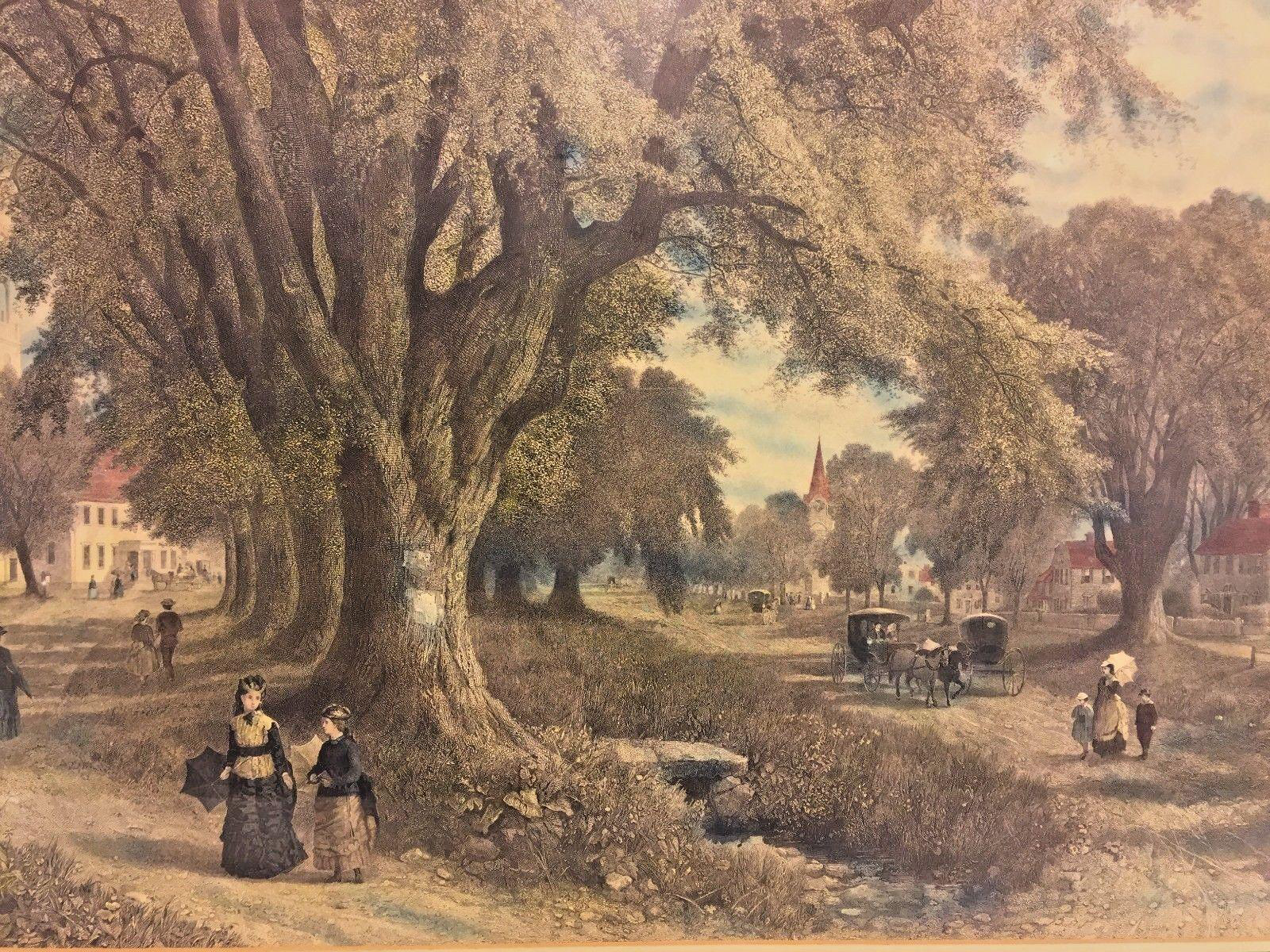
If Marks has his way, though, the legend will live again. Elms along our riverbanks will help to save an entire ecosystem of expansive floodplain forests, and generations to come will experience once more the profound beauty of these soaring trees along our city streets. But restoring a legend, it turns out, is not for the faint of heart. The process is labor intensive and fraught with uncertainty, demanding years of strict adherence to careful scientific methods—and endless reserves of patience. Success, ultimately, requires a leap of faith, an understanding that today’s efforts are a gift to the future, to forests unseen.
Labor of Love
In the sweltering greenhouses, interns Colby and Bazluke methodically complete row after row of cuttings—about 270 by the end of the day. “We thought the whole propagation process would take about a week,” says Stone, who has overseen the painstaking effort. “But it took four.” In the end, the three interns, with help from a band of volunteers, completed 4,827 cuttings. Only 25 percent were expected to take root. But three weeks later, more than 90 percent had successfully rooted, defying expectations. “It was a great problem to have!” says Stone, who then worked nearly round the clock to get all the rooted cuttings potted. Those that survive, will eventually be transplanted into trial plots, where they will be tested for disease-resistance.
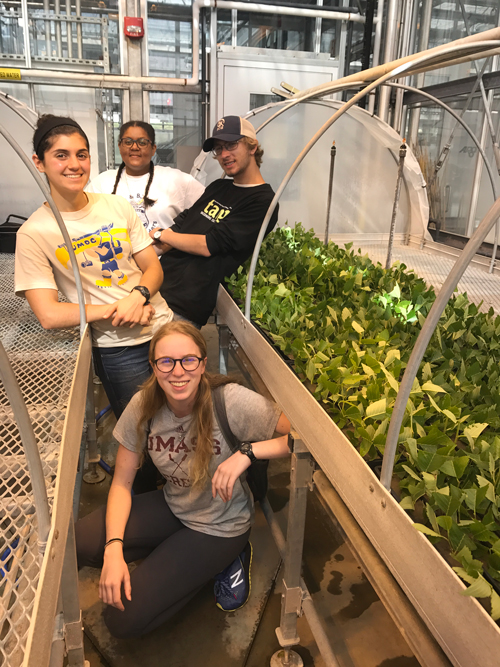
This is the secret to successful restoration, explains Marks. “We need new varieties—genetic diversity.” For more than 60 years, researchers have been scrambling to develop this diversity, searching for varieties that can withstand Dutch elm disease, including a second more virulent form of the pathogen (O. nova-ulmi). “We now have seven varieties that demonstrate good tolerance,” says Marks. Two of these, Princeton and Valley Forge, were successful enough that they are now sold in nurseries and are slowly being reintroduced into the urban landscape. “But seven varieties is not enough,” says Marks. “We need to double that number for long-term survival in the wild.”
Jim Slavicek is a research biologist at the USDA Forest Service’s lab in Delaware, Ohio, where he and his team have been working on elm restoration since 2003. “The DED fungus mutates,” says Slavicek, “which means it will eventually overcome the tolerance that exists in selections like Princeton and Valley Forge. That’s why we need to focus on the forested landscape, where the most DED-tolerant trees can naturally propagate and evolve, eventually developing mechanisms that can withstand future onslaughts of the fungus.” Urban settings, by contrast, typically feature single varieties, and the trees tend not to propagate themselves. Ultimately, restoration of naturally occurring forest elms will provide a source of disease-tolerant trees for use in urban settings, too.
No one knows the ecology of floodplain forests better than Marks, who has spent years pulling on waders and exploring the Connecticut River watershed, often tramping through the forest understory in waist-high water. At nearly every site he’s studied—more than 100 in all, elms are still taking root, but they are quickly succumbing to disease, never reaching the soaring heights of centuries past. “We realized that we have to figure out how to get this species back, if we are truly going to restore these floodplains,” says Kim Lutz, director of the Connecticut River Program. And so began a partnership. The Forest Service had the facilities, skills, and staffing to do the meticulous breeding needed to establish new varieties. The Conservancy had land where new trees could be planted. And they had Christian Marks, with his intimate knowledge of New England floodplains and the region’s great survivor trees.

“Rainbow. Podunk River. Hadley. Whale Tails. Cummingham. Goff Brook—I’ve collected from all of them,” says Marks, reeling off the names of some of the ancient elms he has stood beneath each spring, watching as arborists climb 60 or 80 feet up into the spreading limbs. The clipped branches spiral to the ground, where Marks waits to collect and label them. Of the 50 survivor elms Marks has worked with in New England, only about one in four will have elevated tolerance for the disease. His tireless mission, year after year, has been to figure out which ones might hold the promise of new hope for the American elm.
Some of the branches he collects provide the cuttings to make the clonal copies started by interns at work in the greenhouse. Others are rushed overnight to the US Forest Service research station in Ohio, for the start of the complex cross-breeding process. Here, they are recut and stored in water until the flowers open and drop their pollen onto the wax paper below. Next, USFS researchers collect the pollen and head out to the trial plots, where varieties of disease-resistant “mother” elms, including Princeton and Valley Forge, have been planted. Here, the fresh pollen from the ancient survivor “father” trees is carefully blown onto individual branches, each one encased and sealed in a plastic bag so as not to be contaminated by stray pollen from other trees. “Every father tree is crossed with at least two mothers,” says Marks. “We have more than 100 crosses at this point.”
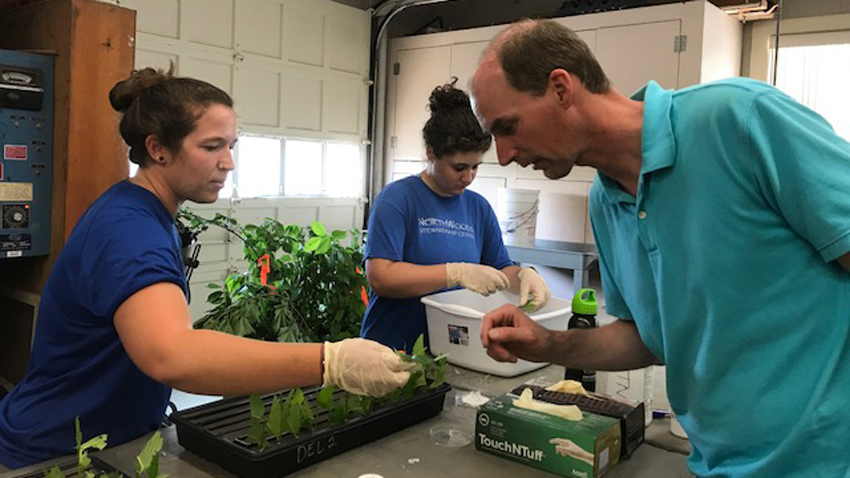
A couple of months later, the USFS team collects the seeds produced by the latest cross and rushes them back to Marks in New England, where they are planted in tiny pots—and carefully labeled. Row after row of seedlings line the tables now at the UMass greenhouses, some no bigger than a fingernail, others nearing three feet in height—about 800 in all. With help from her team, Stone checks their progress every day, noting signs of growth invisible to the casual observer. For months, the whole batch of tiny seedlings, along with the thousands of cuttings, will be carefully tended and repotted, before they are ready for transplanting to test plots in the field. Then comes the waiting and watching.
For the next several years, at sites in Vermont, New Hampshire, Connecticut, and Massachusetts, Conservancy interns will monitor the progress of the fragile elms. This summer, Colby and Bazluke spend long days in the field hacking their way through thick vegetation to reach the saplings, battling tall grasses, giant ostrich ferns, and tangles of thistle, bindweed, and stinging nettle. They measure basal diameter and height. They look for tags, making sure each tree is labeled. They spray deer repellent and check to be sure every trunk is wrapped for protection from rodents. They slash away at any competing weeds. And they keep an eye out for yellow and wilting leaves—signs of DED.

“It’s pretty wild to see all these little trees planted out there,” says Gus Goodwin, conservation coordinator for The Nature Conservancy’s Vermont chapter. “And to realize how long it will be before we’ll have any definitive answers about survival rates. But it’s a great feeling to be part of this process.” Goodwin, who is also a woodworker with an appreciation for the unique characteristics of elm wood, adapted an existing app that has dramatically improved the quality and efficiency of the field work for Marks and his team. “Essentially, it allows elm techs to use a high-accuracy GPS to precisely map where the trees are planted,” he says, “which means less time spent searching for hidden saplings!” The app also makes it easy to enter all the growth, health, and vigor data out in the field, and then synch it with the database back at the lab for speedy editing—a quantum leap from the laborious task of re-entering data from hand-recorded sheets, notes Goodwin. “And then double- and triple-checking every entry for accuracy.”
When the tiny elms reach 1 inch in diameter, the injections begin—every single sapling gets a shot of the two strains of DED. “That is the moment of truth,” says Marks. “We can tell in a couple of weeks whether they will be disease resistant. Most are dead by the end of the summer.” Those that survive—perhaps a third—will continue to grow and put down roots, pioneers in establishing a new population of wild elms.

Urgent Mission
Restoring a lost species requires a certain kind of humility and tenacity. The work is laborious. The failure rate is high. The timeline is long. But Christian Marks is not easily daunted. He has a vision of what’s possible—and he loves these trees. “I’m just lending a helping hand early in the process,” he explains, describing what he likes to call his dating service for elm trees. “Eventually, we will walk away, and the evolution of resistance by natural selection will take over.”
But first, he explains, urgency in his voice, we need to establish enough disease-tolerant trees in the same place so that they can breed among one another. The recent outbreak of a new invasive pest, the emerald ash borer, which is attacking another critical floodplain species, makes the restoration and replanting of elms along rivers in the Northeast more urgent than ever. “The good news,” says Marks, “is that we have several new varieties in the pipeline that look promising. We are nearing the finish line.”
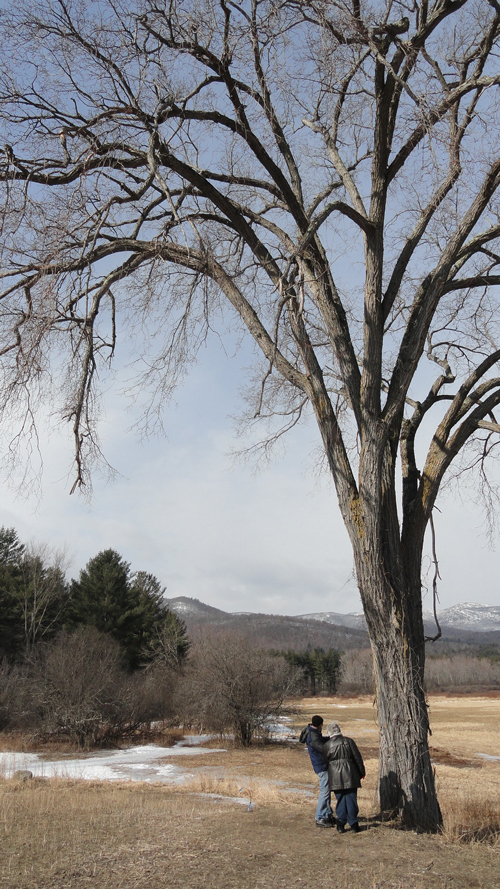
A recent grant from the Manton Foundation is helping to speed the restoration process along, including the flurry of propagating work in the greenhouse this summer. “Thanks to their generosity, we are in the midst of a five-year effort to see if we can double the number of disease-resistant cultivars,” says Lutz.
Progress can’t come soon enough. As the threat of climate change continues to loom, more and more people are beginning to understand why floodplains are so important, why we need these giant protective sponges along our riverbanks to buffer human communities from rising waters. Floodplain forests also filter sediment and excess nutrients to protect water quality, and they provide habitat for wildlife and recreation for people. Urban areas, too, are poised to benefit from the return of the elm, as cities seek green solutions to climate change. Studies have shown, for example, that a single large American elm, located on the southern side of a home, can intercept 2,384 gallons of storm water, conserve 107 kWh of energy, and sequester 518 pounds of CO2 annually.
“No matter where I go,” says Mark Smith, deputy director for The Nature Conservancy’s North America Water program, “the reality of increased floods and flooding damage is front and center.” The issue unites people, he notes, cutting across every geographical boundary and every party line. From the hills of California to the fields of Iowa to the coast of Louisiana to the banks of the Connecticut River in New England, communities everywhere are looking for solutions. “One of Christian’s great contributions to this effort,” says Smith, “has been his deep knowledge of floodplains and their dynamics and what’s needed to bring them back. And, of course, his commitment to the elm.”

Thanks to the help of dedicated interns and volunteers, Marks has planted elms at more than 30 sites in the Connecticut River watershed—3,300 seedlings from crosses at the Conservancy’s field trial plots in Vermont and more than 1,000 cuttings from clonal copies of the seven disease-resistant varieties. If some of this year’s 5,000 new cuttings and crosses are successful, more varieties will be joining the original seven. Enthusiasm among volunteers is high. “There’s something about planting a tree,” says Marks. “It’s meaningful to people. It creates a tangible legacy.”
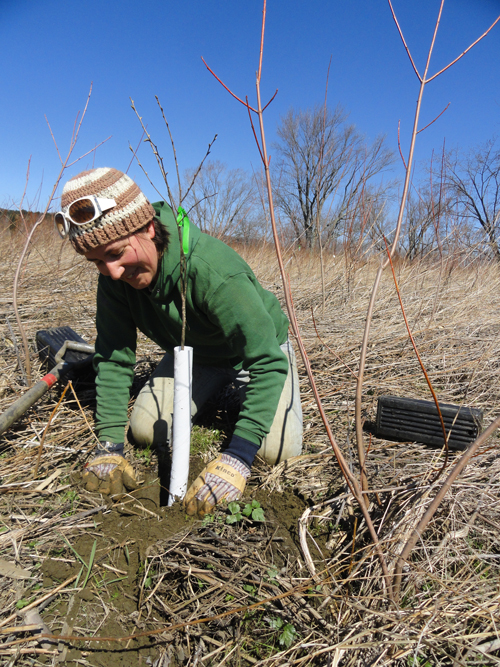
Some of the restoration sites, like the Conservancy’s Maidstone Bends Preserve on the Upper Connecticut River in Vermont, have been successful, boasting elms that now stand more than 20 feet tall. Other sites have struggled. One was destroyed by fire. At another, dozens of young saplings snapped in two, when rising waters froze during a winter flood. But Marks perseveres.
Several new restoration projects are about to get underway, including two in New Hampshire—one along the Ashuelot River in Swanzey and another along the Connecticut River in Colebrook. In Massachusetts, after five years of collaboration with multiple partners, the Conservancy recently helped protect more than 370 acres of rare floodplain habitat just minutes from the city of Springfield. “The scope of this project is unprecedented,” says Marks, noting that, once the Conservancy’s restoration work on the parcel is complete—roughly 223 acres—the Fannie Stebbins Memorial Wildlife Refuge will be the largest expanse of natural floodplain in the Connecticut River watershed.
The restoration effort on the Stebbins land will feature the planting of thousands of trees, including disease-tolerant elms. With each sapling planted, hope will take root once again. Hope for a future where the American elm once again rises high above the forest canopy along our riverbanks. A future where children once again look up from the sidewalk and marvel at the graceful silhouette of a giant elm, shading the street below with its sheltering branches—its presence a quiet testament to the years of dedication and commitment that powered the quest to restore a beloved tree to the American landscape.
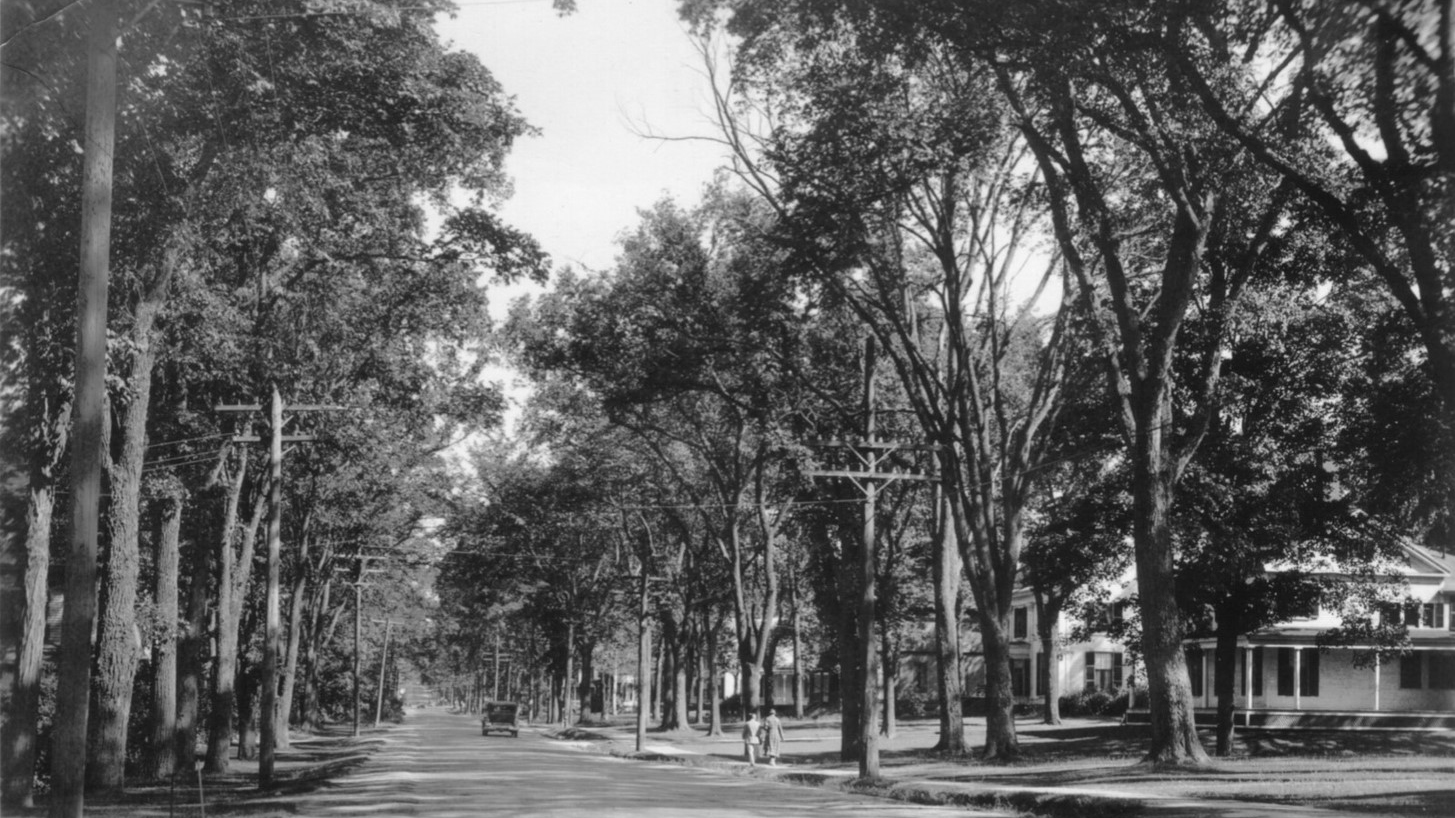
Suki Casanave is a writer for the philanthropy teams in Massachusetts and New Hampshire.
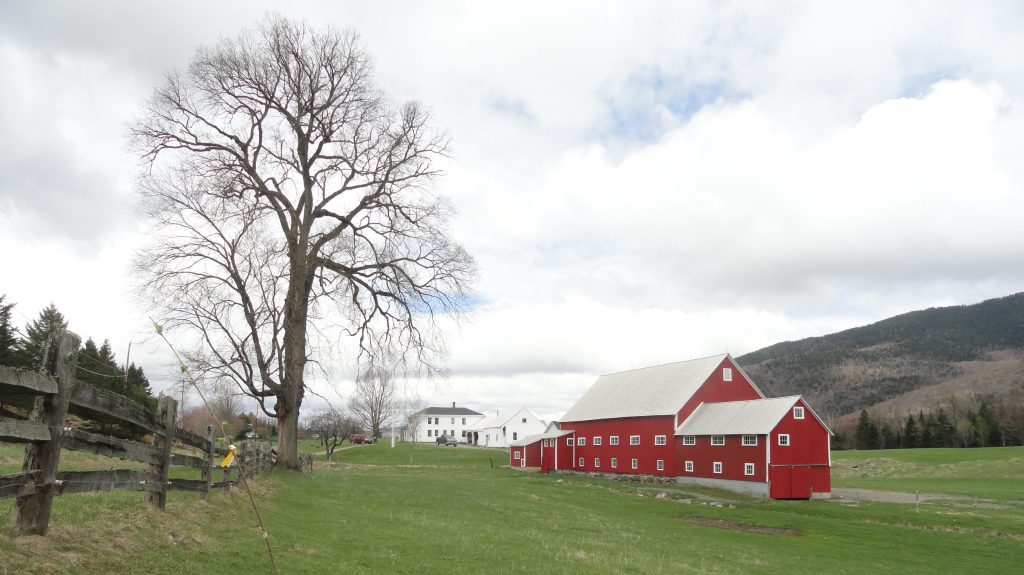



I know of one naturally resistant tree near Waterloo, Ontario, Canada. It is about 50 feet high and has many seedling around it, some of which appear to be resistant as well.
We have a huge old elm on the edge of our nature with weird growths about a foot across on its trunk. These appear to be places where limbs may have begun but were somehow inhibited from growing. Tiny elm leaves grow from some of them. the tree is very old as it is large enough in circumference that one can’t embrace it. If you’d like a picture of it I’ll try to get one. It might be a tree you’d want to include in your studies/project. I don’t have an increment borer or I’d determine age that way. I know there is another method (DBH?) I could try, but from its considerable girth and height I’d say several decades. Dru Clarke 7810 Hopkins Creek Rd. St. George, Ks. 66535 785-494-2419 (we have a small farm with horses and cattle)
There is a huge American Elm tree on State Street near the Ralston city hall in Ralston, NE. Apparently it is resistant to the Dutch Elm disease. Chinese elms are ugly in comparison. I grew up with elm trees and remember how fast the disease did them in.
Craig in
Ralston, NE
Thank you Suki Casanave for this article and thank you Christian Marks + team for spearheading this research.
Have any surviving Elms growing further west been sampled?
A few years ago when I was visiting relatives in Wisconsin and Minnesota I was dumbstruck to see Elms as casual parts of the landscape. At first I didn’t believe what I was seeing, and asked my relatives if these trees were indeed Elms, and was told offhandedly that indeed the trees were Elms.
As I drove around the two states, I saw more and more living Elms, including two incredible trees on either side of a farmhouse, towering over it. If the farmhouse was ±40’ tall, then the twin trees were in excess of 100’ in height.
As I understand it, the phenomenon of American Elms in Wisconsin and Minnesota is due to how Dutch Elm disease spread across the US: from east to west. Because Lake Michigan is oriented north-south it established an effective barrier to its spread in the states to its west.
A helpful review. I have discovered what I believe is an American elm. It is is in a natural wooded area of a residential development. It is about 12 inches diameter at the base and looks healthy. I have found no other shoots nearby. I would be willing to take a sample for evaluation if requested, and sent it to you.
Robert W. Merriam rwmerriam2@gmail.com 919-942-3363
I would love to help promote interest and support, by photographing this species, so that I can publish an interpretive note card worthy of inclusion in my line of stationery I distribute broadly. I am about to publish an image I made of an American Elm which I photographed just west of Fargo, North Dakota. I have many other such images, and a large lithographic art print of cottonwoods in Alaska. I invite you to contact my studio. I travel widely, and am about to venture across the country on such projects. All of my work is large format, 4 x 5″ film. Cordially, Myron Rosenberg, P.O. Box 101900, Anchorage, AK 99510-1900 Studio: (907) 745-1961
In 2007 I ordered and planted a Princeton American Elm from River Edge Farm in Georgia. For 13 years it appeared to thrive reaching a height I estimate at 25-30 feet. Last year I noticed a split between the main trunk and one of the major side branches. That side branch never leafed out last year and the foliage on the rest of the tree seemed rather weak. By late summer all the leaves had died off. In a strong wind this Spring the partially severed limb snapped off and the tree now shows no signs of life. In fact a good part of the bark has now fallen off and what I assume are insect tracks are visible on the exposed trunk and on the inside of the detached bark. I will proceed to cut the tree down later this Spring or early Summer. Would photos of the damaged/dead tree be of any use to you? Is there any species of Elm available now which might survive in my area? I live in Rochester, NY. Thanks. LTS
Hello,, can this process be applied to the pine bark beetle thats killing most of our western forests?
I live in Westchester, Illinois. Westchester had many elm trees planted by Samuel Insull in the 1920s. These trees died from Dutch Elm in the 70s and 80s. Few are left. I planted two Princeton elms in my front yard, one in about 2002 and the other about three years ago. Both are doing well. The oldest one I got from a nursery in Georgia. They sold trees to Prince Charles of England. They do not seem to be in business anymore. The other tree came from a nursery in Joplin MO.
Westchester’s streets were lined with elms when I was a little guy and provided great shade and airconditioning. If you want cuttings or seeds from my elms, I would be happy to provide them.
Good luck in bringing back the elm.
When I lived in Wisconsin, about 15 years ago, a friend who was trained as a landscape architect said that he was surprised at how many Elm trees he saw during his visit. He flew into Chicago and drove to Oshkosh. I see the work in this article is taking place mostly in New England. I hope that different areas of the country are sharing some of their Elm stock with one another, especially if you are trying to cross breed.
My Liberty Elm succumbed to DED this summer after about five years of growth in my yard in Glastonbury, CT. I am devastated by the loss of this beautiful tree. All the neighbors commented on how fast it was growing. But, alas, all the leaves have flagged and almost every branch is affected. I only noticed the withering two weeks ago. Wow, that was a speedy death for my poor elm.
So disease resistant trees are still very susceptible, and you may only find this out after years of enjoying the tree. If you have the money to treat the tree with fungicide every three years, you may have it live longer than I had my tree, but really, do you want to have to do that?
I have young elm trees growing all around my property. Unfortunately they usually sprout up in areas where I cannot leave them or are too difficult to get at to transplant them. The largest one reached a height of about 50′, but unfortunately died. I assume it developed Dutch Elm disease.
I have been a lover of trees since childhood. The loss of the beautiful Chestnut, American Elm and now the battle of the White Ash with emerald ash borer have been painful to me. I have seen a very few small Chestnuts, and used some chestnut lumber in cabinet making but only saw dead trees and logs in my middle age. we used dead tees for fence posts on the farm because the wood is very rot resistant. I’m 86 now and don’t expect to see the chestnuts come back, but its encouraging to read about the dedication of these young professionals who are basically devoting their lives to such a monumental yet noble task. Thanks and God bless you and your work.
Warren M. Whittemore
I know one or two “second growth” elms that have apparently overcome naturally the dutch elm disease. They are located in Sharon, Vermont. If anyone is interested in these trees, I’d be glad to meet with them this summer.
Thanks George! Please see the comment from Christian O. Marks on how to report a large survivor tree.
Thank you.